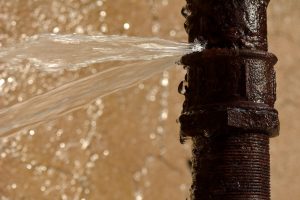 When is the last time you got a good long look at the foundation of your home? What about your home’s air ducts? Your septic tank? Chances are that these are things you don’t get a chance to inspect very often. Like your plumbing pipes, they are hidden from view, so for routine maintenance you’ll typically have to call in a specialist for an inspection.
When is the last time you got a good long look at the foundation of your home? What about your home’s air ducts? Your septic tank? Chances are that these are things you don’t get a chance to inspect very often. Like your plumbing pipes, they are hidden from view, so for routine maintenance you’ll typically have to call in a specialist for an inspection.
Your home’s plumbing pipes are hidden behind walls, under the floors, and in the ground. You cannot really get a look at them, for the most part, without specialized equipment to do so. However, there are some signs your pipes are beginning to fail. Follow our tips to recognize a problem with your pipes, one that may require them to be replaced, and contact our team when you notice a problem.
Signs of Corrosion
A question we get a lot from homeowners is whether a failing pipe really needs to be replaced or if it can be repaired. However, when it comes to corrosion, your pipes are telling you they are ready to go. Unfortunately, metal can corrode unexpectedly due to the soil and the environment around them. Once a pipe begins to rust and corrode, there’s really no stopping it; your pipe could wear away leaving you with a major leak on your hands.
A few possible signs that your pipes have started to corrode include the following.
- Flakes of rust in your water, or a red-brown discoloration.
- Low water pressure due to leakage.
- A strange taste in the water.
Any sign of corrosion in your pipes, even those that can easily be replaced, deserves thorough inspection from a professional plumber.
Slow Drains
This is a tricky one. Most of the time, a slow drain is really no big deal. It could be caused by a buildup of fatty substances, or a clump of hair. These are things that are easy for a plumber to clean, but sometimes a slow drain is a different sort of problem.
Drain pipes that are frequently clogged may be corroding themselves, or there may be something destroying the pipes from the outside in. Tree roots can wrap around and pierce pipes, since they offer such a fine source of fertilization. While root killer and drain snaking may help control the problem, eventually they can completely destroy the pipes.
Old Age
Finally, you should consider replacing your home’s plumbing pipes once they reach a certain age, even if you have not noticed an abundance of problems. Before the 1960s, galvanized steel pipes were common. Engineers knew that installing a steel pipe would mean fast corrosion, so pipes were dipped in a protective zinc coating to stop this.
What was not known back then was how quickly pipes would corrode once the galvanized coating wore off. If your pipes are this old and made of galvanized steel, it may be better to replace them now than to wait for a situation in which you’re faced with leaking all over the property.
Most piping materials should not worry you. Modern copper piping and plastic pipes could last 100 years or longer. However, if your pipes are about a century old, there is the possibility of lead piping, or pipes that have come into contact with lead in the past. If you are uncertain, be sure to contact a plumber for an inspection.
Call MarGo Plumbing Heating Cooling Inc. for an experienced, friendly plumber in Wayne, NJ.
